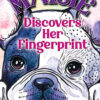by Sarah Hamaker, reluctant marketer
Over the past two months, we’ve talked about basic query don’ts and dos. This month, we’ll discuss the anatomy of a query letter.
Now that you know what to do and what not to do overall, let’s get down to the nitty-gritty of the query letter. The basic query letter should have five paragraphs broken down into a lede, proposal statement, prose outline, writing credits and closure.

Image courtesy of ddpavumba/ FreeDigitalPhotos.net
Keep it short and sweet. Delete adverbs and adjectives. Use of bulleted lists instead of prose can work sometimes.
First Paragraph: The Lede. The lede is what grabs the reader, in this case, an editor. So don’t start off with the boring, “I would like to propose an article.” Instead, begin your letter with your article’s actual lede, a provocative question, or an interesting bit of information.
This is your opportunity to shine, so make the most of it! The key to writing a good query is to start with a good description of the book or article. Use archetypes/key words to describe what’s happening instead of character names. You want instant identification with your piece.
Second Paragraph: The Proposal Statement. The proposal statement covers the title, length and a single sentence summary of the work.
Third Paragraph: The Prose Outline. This section goes over what you will cover in the article. You should not give everything away, but enough so that the editor knows you’ve thought through the article.
Fourth Paragraph: Writing Credits. If you have writing, educational or personal experience that will bolster your credentials as the one to write this piece, then include it here. However, don’t overwhelm the editor with a ton of clips and/or credits. Choose the ones that most fit the publication.
Fifth Paragraph: Closure. Be direct but not prideful in asking for the assignment. You shouldn’t say that the editor must hire you or that she would be foolish not to. Instead, say things like: “If you would like to see an article on this subject, I could provide it within three weeks of your reply” or “Thank you for your consideration, and I look forward to working with you on this piece.”
Should you send out more than one query at a time? Different people have different ideas on this one. Some say it’s okay to have the same article out at different places at the same time. However, you could get into sticky situations if more than one publication wants to buy the same article.
What’s better is to pitch similar articles to different publications, such as taking the same basic premise and reworking it to fit into multiple venues.
What has been your best query opening line? Next month, we’ll go over what makes a great article.

